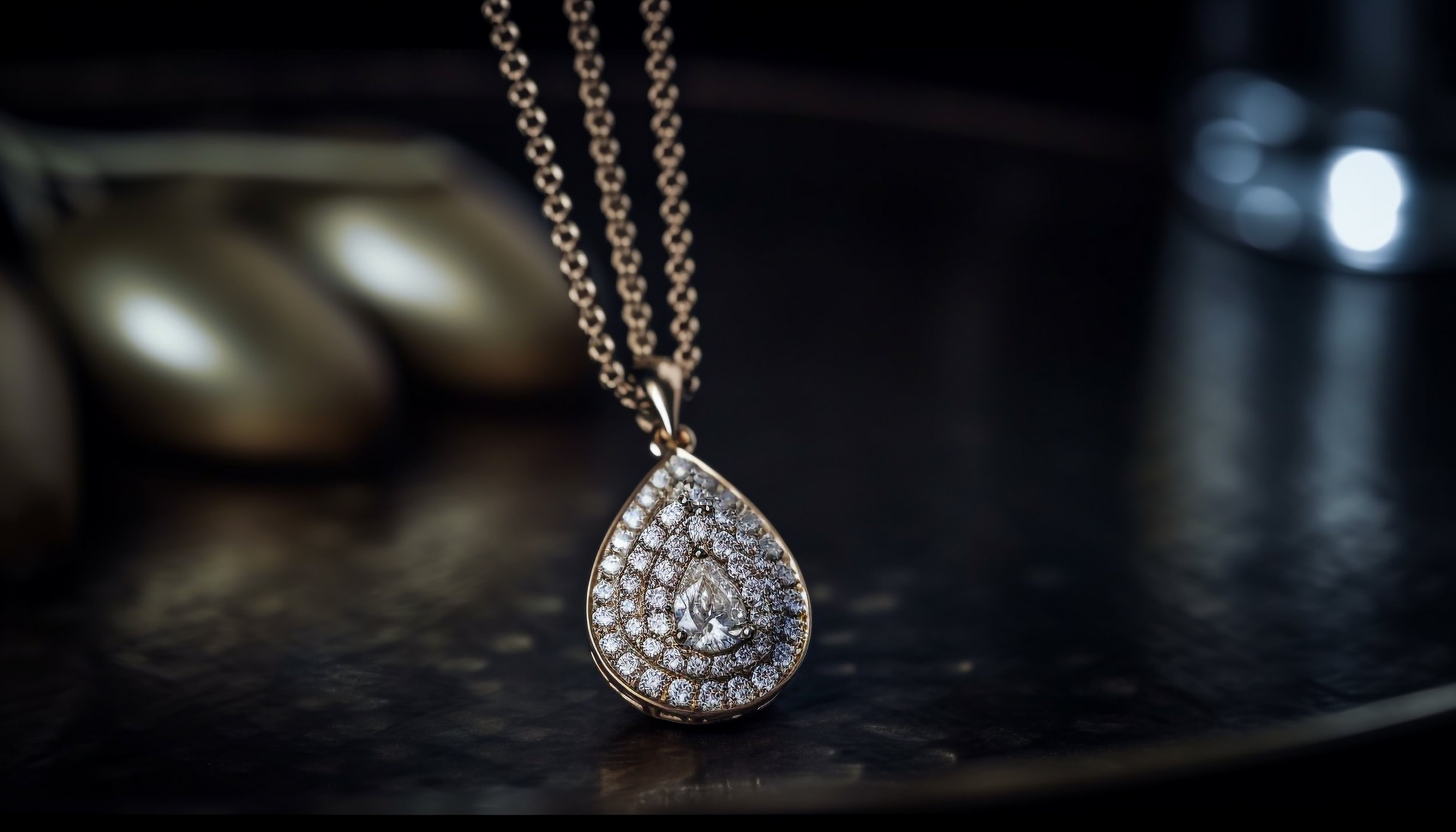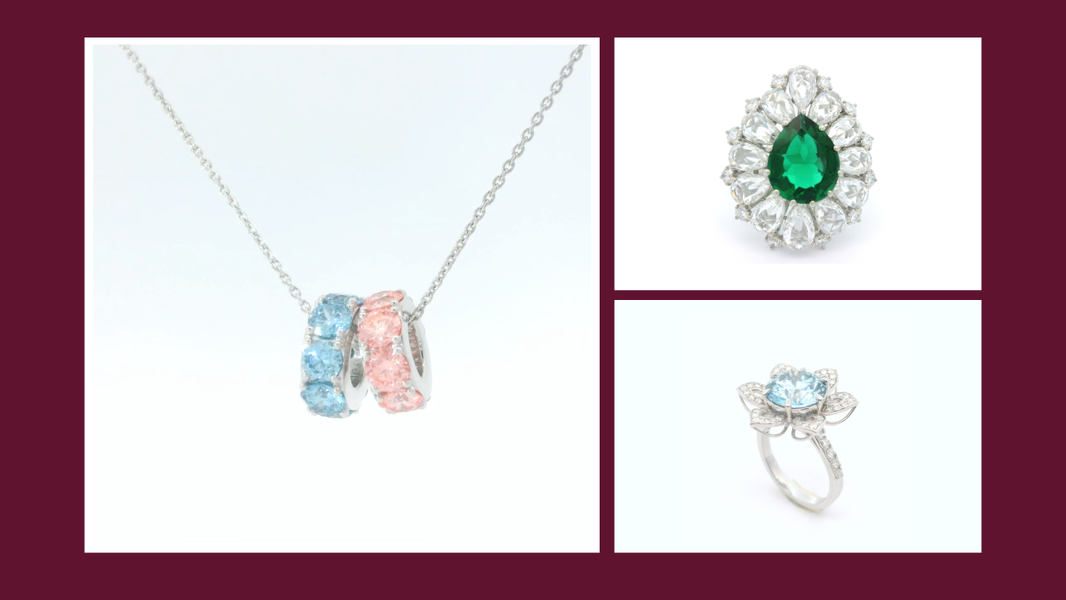With the introduction and proliferation of lab grown diamonds, the diamond industry has witnessed a massive shift in demand, with more and more people steering away from naturally found and mined diamonds every day. Their sustainable and ethical sourcing are among the leading reasons behind the growing adoption of these diamonds, coupled with their natural appearance, and equal durability. The deal is further sweetened by their significantly lower price tags, making these diamonds more budget-friendly. But, how can you tell real lab-grown diamonds and fake ones apart? Let’s uncover some methods of identification.
Importance Of Knowing The Difference
Given their similarities with natural diamonds and identical looks, one may wonder why it is essential to know the difference between real and fake lab-grown diamonds. As the market for lab grown diamonds increases, understanding the difference between genuine ones and fake synthetic imitations is vital for a myriad of reasons including the following:
-
Preventing Getting Scammed
Without knowing the difference, you can fall prey at the hands of frauds who sell cheap imitations like cubic zirconia or moissanite in the name of lab-grown diamonds. These copies cost nothing even close to the real value of the lab diamonds, and without knowing the difference, you risk paying excessive amounts.
-
Quality Of Product
Synthetic diamonds are poor in quality, whereas genuine lab grown diamonds are almost identical to natural diamonds in every respect including hardness, brilliance, and even durability. Diamonds made of synthetic materials and sold under the name of lab-grown diamonds do not possess these properties and can very easily get spoiled, and not offer the same brilliance as a genuine lab-grown diamond would provide.
-
Assessing Investment:
When a person purchases a lab-grown diamond, they look at it as an investment. Lab-grown diamonds are a stable form of jewellery purchase as they will retain their value in the long term. If you accidentally buy fake diamonds in the name of real lab-grown ones, you stand the risk of losing all the money you expected to have in an instant, without even being aware for months and years. Diamonds made of synthetic materials have no real retainable value, which makes them useless from this perspective.
Spotting The Difference
To understand the difference between real and fake lab-grown diamonds, it is first essential to know what lab-grown diamonds are. In essence, lab-grown diamonds are real diamonds, containing the same properties as natural diamonds. The only difference is that these are created by using advanced technological methods and tools. These methods create the natural conditions which are conducive to growing lab diamonds, allowing the formation of lab-grown diamonds.
To prevent falling into a trap, and purchasing fake lab diamonds in the name of real ones, it is essential to know the key differences between the two. When purchasing lab diamonds, focus on the following parameters and methods of identification to assess whether or not you are actually getting real lab-grown diamonds, or being sold cheap, fake alternatives.
Diamond Certification
An essential element to look at is the certification that comes with the diamonds. Lab grown diamonds come with authenticity certifications issued by regulatory authorities like IGI, SGL, GIA, etc. When buying a lab diamond, check for these certifications, and ask about them to the seller to ensure you get a real diamond. Diamond certification ensures authenticity and plays an important role when it comes to selling the product since it contains details about the diamonds. Fake diamonds would not contain any identifying marks and not be accompanied by authentication certificates.
Diamond Cut Quality
The cut quality of real lab-grown diamonds is similar to that of natural diamonds. Apart from this, these diamonds would have laser inscriptions that are microscopic in nature. These inscriptions are typically found on the girdle of the diamonds, creating a distinctive sign of them being created in a lab. Under a magnifying glass, these inscriptions are easily visible and are a sure sign of authenticity. Fake diamonds would not have these inscriptions, and inspection of the diamonds prior to purchase is essential.
Thermal Conductivity
Another way to distinguish a lab-grown diamond from a fake lab diamond is by testing its thermal conductivity. This can be done using a diamond tester, which effectively identifies whether the material is a genuine lab-grown diamond or a cheaper alternative like cubic zirconia or moissanite. While standard diamond testers can provide reliable results, more advanced versions specifically designed for lab-grown diamonds offer even greater accuracy in differentiating between authentic lab-grown diamonds and imitations.
Common Fake Diamonds Mistaken For Real Lab-grown Diamonds
There are three main types of cheaper alternatives which are commonly sold as genuine lab-grown diamonds. When going to purchase lab-grown diamonds, it is essential to stay aware, ensuring you are not sold any of the following alternatives instead, at the price of real lab diamonds.
Cubic Zirconia
The cheapest alternative to real lab diamonds, cubic zirconia is very commonly available and sold as a lab-grown diamond. However, this material does not match the hardness or brilliance of a real diamond. Moreover, it is extremely lightweight and flawless in properties as compared to any natural or lab-grown diamonds. When closely inspected, these can be identified due to their characteristics.
Moissanite
One of the most difficult diamond alternatives to identify as fake is moissanite. This material is very close in its brilliance to lab-grown diamonds, but its distinguishable colourful sparkle is a prominent sign that the material is not being a real lab-grown diamond.
White Sapphire
Infrequently used as a substitute for diamonds, white sapphire has very low brilliance and is quite a soft material, which some sellers try to sell as diamonds. However, these also lack the sparkle of diamonds and tend to become cloudy over time.
Starla Jewels’ Promise Of Genuity
Investing in diamonds, whether natural or lab-grown, is a big investment. At Starla Jewels, we value your trust and ensure you receive lab-grown diamonds of the highest quality. Our emphasis on transparency, and product quality shines throughout our stellar product range. Every diamond we use is certified by reputable labs like IGI and SGL. Additionally, we value ethical business practices, and as such, our diamonds are sourced ethically, while ensuring their quality stands up to our expectations, which translates into client satisfaction. Looking for a competitive-priced premium diamond product? Our exclusive range of diamond jewellery and options to customise your own will provide what your heart desires.
Conclusion
Lab-grown diamonds are growing in demand at a rapid pace, due to their sustainable nature and the fact that they are priced at a fraction of the cost of natural diamonds. However, since they are relatively new, many people are unaware of identifying real and fake lab diamonds. This makes them vulnerable to fraudulent practices, especially when people choose to purchase from unreliable sellers. To prevent all this, knowing the qualities of real lab diamonds, and choosing trustworthy sellers like Starla Jewels is the way to go.








